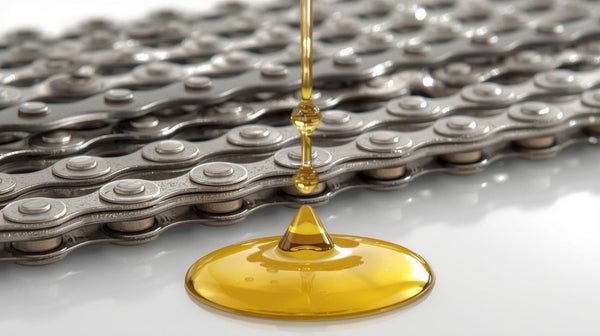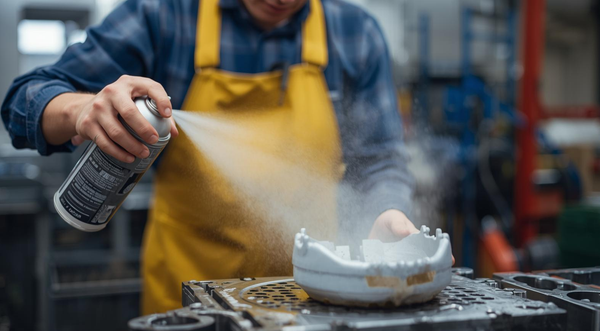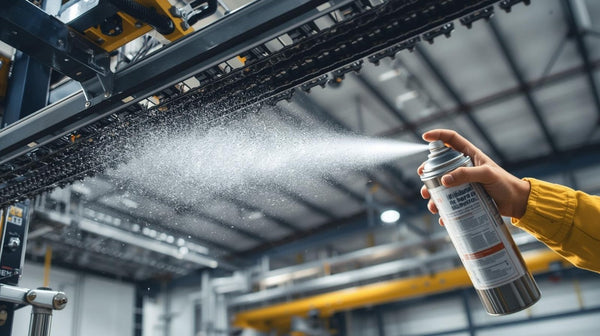Which grease is for what?
The key to success is choosing the right lubricant.
In today's dynamic industrial world, where machines and devices operate in a wide variety of conditions, the right choice of lubricant is a key technical issue. Although it may seem that there is a universal solution, the truth is that each application requires an individual approach. Universal lubricants, if they can be spoken of at all, are expensive and do not always meet expectations. Therefore, it is worth understanding how important it is to choose the right product for a given application.

At first glance, in our considerations on what grease to use for what we need to answer the question:
What is the purpose of grease in the lubrication unit?
Lubrication is one of the key elements of machine and device maintenance. Thanks to it:
- Friction between mating surfaces is reduced,
- The wear of mechanical components is reduced,
- Protects against corrosion,
- Reduces vibration and noise
- Dissipates heat,
- Seals mechanisms, preventing contamination from entering.
Each of these aspects is crucial for the proper operation of machines and devices, therefore the selection of the right lubricant has a direct impact on the efficiency and durability of the mechanisms.
Is it true that universal grease is a myth?
Many users dream of a universal grease that will work in every application. However, the reality is different. Different machine operating conditions require different solutions. A universal grease may be attractive at first glance, but:
- Cost : Broad-spectrum lubricants are usually more expensive because they must meet many stringent technical requirements.
- Compatibility : A universal product is not always optimal for specific operating conditions, such as high temperatures, heavy loads or the presence of moisture.
- Efficiency : A general purpose grease may fulfill basic functions, but it will not necessarily provide the highest performance.
Therefore, instead of reaching for a universal solution, it is better to focus on selecting a grease that is dedicated to a specific application.
What factors influence lubricant selection?
The choice of lubricant should be based on a thorough analysis of the machine's operating conditions. Key factors include:
- Operating temperature
- High-temperature applications require synthetic-based, oxidation-resistant lubricants.
- At low temperatures, it is important that the grease maintains the right consistency and does not thicken.
- Mechanical loads
- For high loads, lubricants with EP (Extreme Pressure) additives are used, which protect against micro-cracks and wear.
- Speed of work of elements
- Lubricants for rapidly rotating components, such as bearings, should have a low coefficient of friction and appropriate viscosity.
- Environmental conditions
- In humid or corrosive environments, it is worth choosing waterproof lubricants or lubricants containing corrosion inhibitors.
- Type of contact surfaces
- The materials from which mechanical components are made may require specific additives or ingredients in the lubricant.
- Hygiene requirements
- The food industry uses certified lubricants (e.g. NSF H1) that are safe in contact with food.
Examples of lubricants and their applications
-
Lithium grease
- Universal in industrial and automotive applications.
- Suitable for bearings, joints and hinges.
- Limitations: not water resistant.
-
Calcium grease
- Excellent water resistance.
- Used in humid environments, e.g. in agricultural machinery.
-
Molybdenum grease (MoS2)
- Ideal for applications exposed to extreme loads and friction.
- Used in gears and joints.
-
Silicone grease
- Universal for a wide temperature range.
- Used in applications requiring chemical neutrality, e.g. seals.
-
Polyurethane grease
- Used in high temperature and high pressure applications.
Another division resulting from the databases used is:
Mineral greases
Base: Mineral oils
- Source of production: Refined petroleum products.
- Application: Universal greases, used in a wide range of temperatures and loads.
- Advantages:
- Low price
- Good lubrication properties under standard conditions
- Defects:
- Less resistant to high temperatures and oxidation
Synthetic greases
Base: Synthetic oils (e.g. PAO, esters, polyglycols, silicones)
- Types:
- PAO (polyalphaolefins ): Universal, resistant to high and low temperatures.
- Esters: Exceptional resistance to high temperatures and oxidation.
- Polyglycols: High stability in contact with water.
- Silicones: Used in extreme conditions (e.g. very low temperatures).
- Applications: Aerospace, automotive, energy, specialized equipment.
- Advantages:
- Long service life
- High thermal and chemical stability
- Defects:
- Higher price
Semi-synthetic greases
Base: A mixture of mineral and synthetic oils
- Application: Compromise between cost and lubrication properties.
- Advantages:
- Better properties than mineral greases
- Lower cost compared to fully synthetic lubricants
Biodegradable greases
Base: Vegetable or synthetic biodegradable oils (e.g. natural esters)
- Application: Industries where environmental protection is key (e.g. agriculture, forestry).
- Advantages:
- Safe for the environment
- Defects:
- Shorter durability
- Oxidation sensitivity
Specialized greases
Base: Unusual oils or substances, e.g. fluorinated hydrocarbons, perfluorinated oils
- Application: Chemical industry, vacuum conditions, extreme temperatures.
- Advantages:
- Exceptional resistance to chemical and thermal factors
- Defects:
- Very high price
Errors when selecting lubricant.
Incorrect selection of lubricant can lead to serious consequences, such as:
- Excessive wear of components,
- Shortening the life of the machine,
- Downtime and failures,
- Higher operating costs.
Therefore, it is worth avoiding the following mistakes:
- Using one lubricant for all applications.
- Lack of regular maintenance and lubrication.
- Use of low quality lubricants.
- Failure to follow the machine manufacturer's recommendations.
How to choose the right lubricant ?
Selecting a lubricant is a process that should be carried out in several steps:
- Operating Condition Analysis : Determine temperature, loads, speeds and environment.
- Consult the manufacturer : Most machines have recommendations for lubricants to use.
- Testing : In some cases, it is worth testing several lubricants to choose the most optimal one.
Choosing the right grease is key to ensuring reliable and efficient operation of machines. Universal greases, although tempting, often turn out to be a compromise that does not always meet all requirements. By investing time and money in the analysis and selection of the best solution, you can significantly reduce operating costs, extend the life of machines and minimize the risk of failure. It is therefore worth remembering that the right grease is not only a product, but above all an investment in reliability and efficiency. In the ABS Serwis company store sklepsmary.pl there is an application that allows us to select the best grease for our lubrication node by determining the working conditions.
















